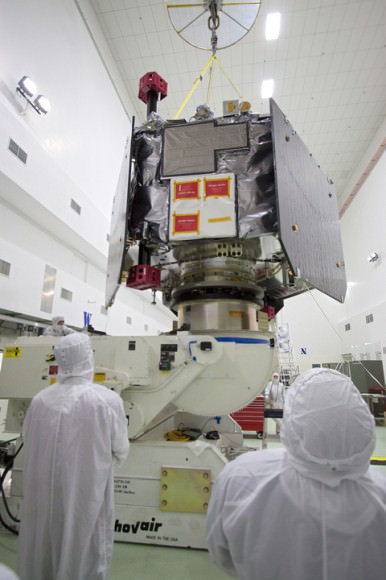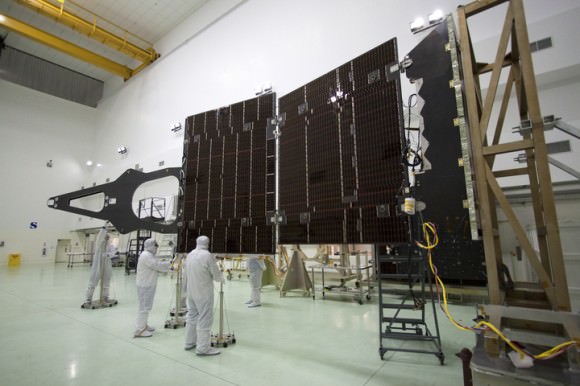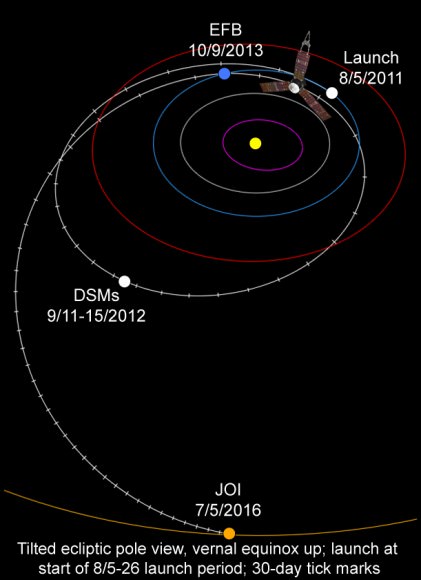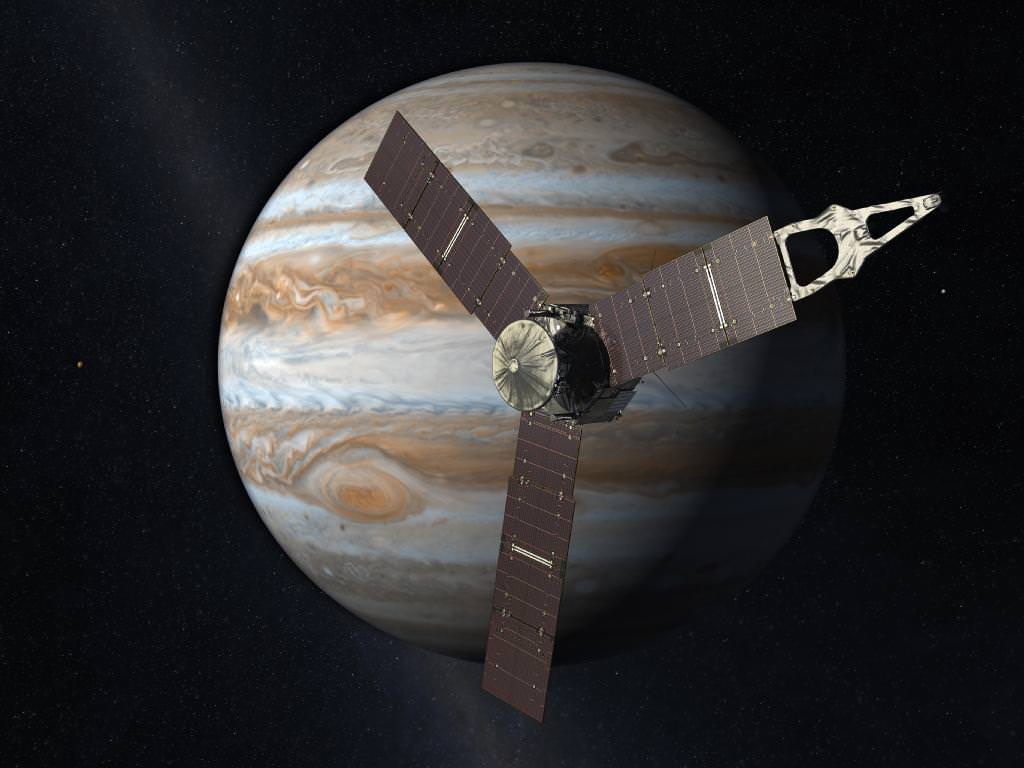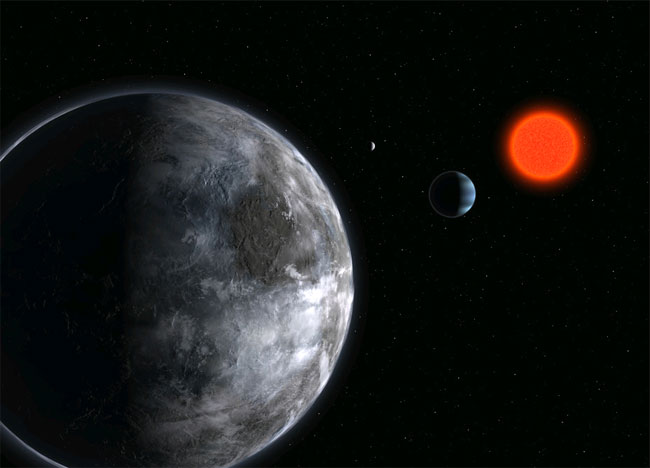[/caption]
Juno, NASA’s next big mission bound for the outer planets, has arrived at the Kennedy Space Center to kick off the final leg of launch preparations in anticipation of blastoff for Jupiter this summer.
The huge solar-powered Juno spacecraft will skim to within 4800 kilometers (3000 miles) of the cloud tops of Jupiter to study the origin and evolution of our solar system’s largest planet. Understanding the mechanism of how Jupiter formed will lead to a better understanding of the origin of planetary systems around other stars throughout our galaxy.
Juno will be spinning like a windmill as it fly’s in a highly elliptical polar orbit and investigates the gas giant’s origins, structure, atmosphere and magnetosphere with a suite of nine science instruments.
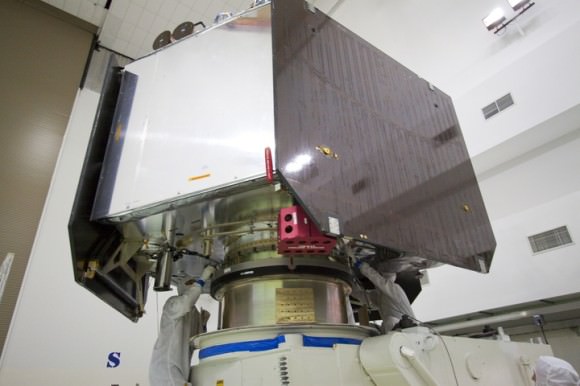
During the five year cruise to Jupiter, the 3,600 kilogram probe will fly by Earth once in 2013 to pick up speed and accelerate Juno past the asteroid belt on its long journey to the Jovian system where it arrives in July 2016.
Juno will orbit Jupiter 33 times and search for the existence of a solid planetary core, map Jupiter’s intense magnetic field, measure the amount of water and ammonia in the deep atmosphere, and observe the planet’s auroras.
The mission will provide the first detailed glimpse of Jupiter’s poles and is set to last approximately one year. The elliptical orbit will allow Juno to avoid most of Jupiter’s harsh radiation regions that can severely damage the spacecraft systems.
Juno was designed and built by Lockheed Martin Space Systems, Denver, and air shipped in a protective shipping container inside the belly of a U.S. Air Force C-17 Globemaster cargo jet to the Astrotech payload processing facility in Titusville, Fla.
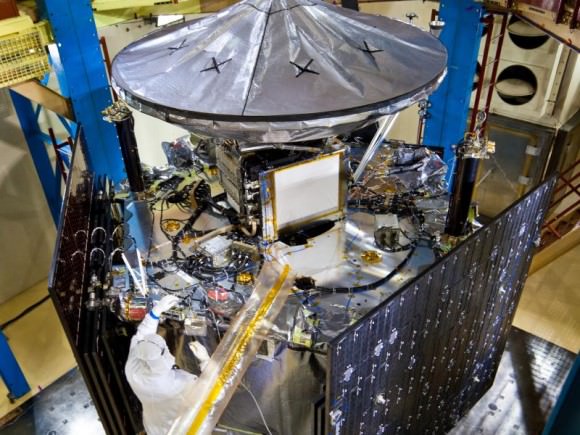
This week the spacecraft begins about four months of final functional testing and integration inside the climate controlled clean room and undergoes a thorough verification that all its systems are healthy. Other processing work before launch includes attachment of the long magnetometer boom and solar arrays which arrived earlier.
Juno is the first solar powered probe to be launched to the outer planets and operate at such a great distance from the sun. Since Jupiter receives 25 times less sunlight than Earth, Juno will carry three giant solar panels, each spanning more than 20 meters (66 feet) in length. They will remain continuously in sunlight from the time they are unfurled after launch through the end of the mission.
“The Juno spacecraft and the team have come a long way since this project was first conceived in 2003,” said Scott Bolton, Juno’s principal investigator, based at Southwest Research Institute in San Antonio, in a statement. “We’re only a few months away from a mission of discovery that could very well rewrite the books on not only how Jupiter was born, but how our solar system came into being.”
Juno is slated to launch aboard the most powerful version of the Atlas V rocket – augmented by 5 solid rocket boosters – from Cape Canaveral, Fla. on August 5. The launch window extends through August 26. Juno is the second mission in NASA’s New Frontiers program.
NASA’s Mars Curiosity Rover will follow Juno to the Atlas launch pad, and is scheduled to liftoff in late November 2011. Read my stories about Curiosity here and here.
Because of cuts to NASA’s budget by politicians in Washington, the long hoped for mission to investigate the Jovian moon Europa may be axed, along with other high priority science missions. Europa may harbor subsurface oceans of liquid water and is a prime target in NASA’s search for life beyond Earth.
